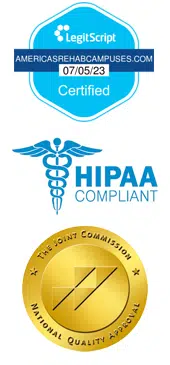
An experimental drug that was initially created to treat symptoms of depression could be more useful at treating opioid withdrawal symptoms. Pharmaceutical company Allergan announced that a drug called Rapastinel showed less than satisfactory results when used to treat major depressive disorder. However, researchers at Duke and Villanova universities have found that Rapastinel may be more useful at relieving opioid withdrawal symptoms in those recovering from opioid dependence. Opioid withdrawal increases the risk for overdose deaths, of which there were 47,600 in the U.S. in 2017.
Rapastinel vs. Other Opioid Withdrawal Treatments
People who are physically dependent on opioids will suffer a range of withdrawal symptoms when stopping these drugs abruptly or when rapidly reducing their doses. Insomnia, muscle pain, and drug cravings are just some symptoms that can be difficult to endure during the earliest days of opioid withdrawal.
Many drug and alcohol detox centers use replacement medications, like methadone, to help people recover from opioid dependence without suffering these symptoms. However, many of these replacement medications are opioids, too, and are often used long term to help patients gradually come off opioids. Methadone, for example, also carries a high risk for abuse and can only be administered in a supervised setting at drug and alcohol rehab centers.
Compared to other medications commonly used in opioid drug detox programs, Rapastinel is found to produce fewer side effects and doesn’t require long-term use to treat opioid withdrawal. Researchers at the universities found that Rapastinel can significantly reverse acute opioid withdrawal symptoms in rats within three days. The average length of acute opioid withdrawal is between five and seven days, though symptoms may persist in those recovering from severe opioid dependence.
How Does Rapastinel Work?
Rapastinel is a partial agonist that binds to NMDA receptors in the brain involved in the maintenance of opioid dependence. This means that the drug has the ability to reduce withdrawal symptoms while offering patients a lower risk of abuse and dependence. In comparison, methadone is a full opioid agonist, meaning it binds tightly to opioid receptors to produce maximum effects. This is why methadone carries a risk for abuse and should only be administered in a monitored medical environment.
Ketamine — another drug that binds to NMDA receptors — has been used to treat opioid withdrawal. But ketamine is found to produce unwanted side effects and carry a potential for abuse. The negative side effects of ketamine have not been reported with Rapastinel when the latter drug is used to treat opioid withdrawal.
Where to Find an Opioid Drug Detox Center
Rapastinel is still undergoing clinical trials and isn’t approved or available for use in treating opioid withdrawal in humans. However, many drug rehab centers use medical detox to help people safely and comfortably recover from opioid dependence. Medical drug detox involves the use of medications such as buprenorphine, methadone, and naltrexone that relieve opioid withdrawal symptoms and reduce the risk for relapse.
America’s Rehab Campuses offers medical detox as part of inpatient, residential, partial hospitalization, intensive outpatient, and outpatient treatment programs. If you or a loved one needs help recovering from opioid dependence, contact us at 833-272-7342 to begin the treatment process today.

